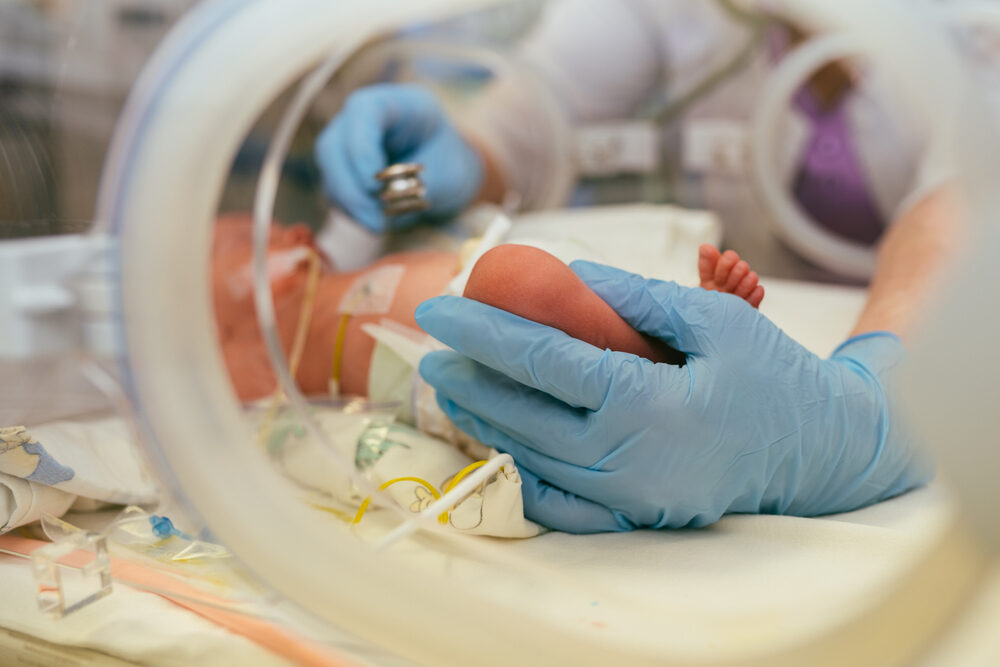
Welcoming a baby into the world should be an exciting and happy experience, and a little nerve-wracking. Great trust is placed in the hands of the medical professionals involved in the development and birth of your baby, but sometimes, mistakes are made and medical providers fail to provide the standard of care they should. While there are some pregnancy complications and several genetic factors that can’t be prevented regardless of the care, far too often, mistakes are made. When this happens, a birth injury or defect may be the result of medical malpractice.
Birth injuries occur in roughly 7 of every 1,000 births in the U.S., and around 1 in 33 babies are born with defects. The severity of injuries varies, from mild to catastrophic, and there may be short- and long-term health effects. Some may require lifelong care, while others recover in the days or weeks following childbirth.
Regardless of the type of birth defect or birth injury, if medical negligence causes it, parents may hold the responsible party liable. Seeking the advice of a birth injury lawyer can help families protect injured children. A birth injury lawsuit may seek compensation for current and future medical bills, lost wages, emotional anguish, and other damages.
But how do you know if your child suffered a birth injury or birth defect? Understanding what they are, how they happen, and the types of negligence and substandard care that can cause a baby preventable harm is important to determine if you have a case and what you’re entitled to.
What’s the Difference Between a Birth Injury and a Birth Defect?
The most distinct differences between a birth defect and birth injury are when and why they occur. A birth defect develops when the baby is in utero, whereas an injury may occur immediately before, during, or after childbirth. In both situations, negligence can cause the issues, but there tend to be more cases of birth injuries considered as medical malpractice.
Some birth injuries cannot be prevented. However, research has found that up to half of all birth injuries could have been avoided. This means that in many cases, someone is responsible for a baby’s birth injury because they failed to act as another professional under the same circumstances would. (They acted in a manner outside the standard of care). Examples include the improper use of forceps or not proceeding with a c-section at the appropriate time.
Genetics do not cause birth injuries. However, other factors, such as the baby’s size or the age of the mother, may increase the risk of injuries. Some of the most common types of birth injuries are fractures, bruising, facial paralysis, and brachial plexus injuries, but there can be more serious health effects, including brain damage and cerebral palsy.
A birth injury caused by someone’s negligence may occur in several ways. When a medical team fails to monitor vitals during labor and delivery, and the baby is deprived of oxygen for too long, they may suffer serious birth injuries to their brain, heart, lungs, or other organs. Medical professionals may also be liable for birth injuries when they fail to intervene when they’re supposed to or fail to diagnose and treat conditions.
Unlike birth injuries, many birth defects are caused by genetics, which means they’re not preventable or aren’t the result of someone’s actions during pregnancy. But there are some situations in which a medical professional may be responsible for a birth defect, such as cleft lips, spina bifida, and heart conditions. For example, there are certain medications that when taken during pregnancy, increase the risks of a birth defect. If a doctor prescribes the medication, they may be held liable, especially if they didn’t communicate the risks to the mother or failed to do their due diligence by identifying possible risks and meeting the standard of care.
Another way someone may be liable for a birth defect is when an infection or health condition goes undiagnosed or untreated during pregnancy because it can cause permanent damage. It’s extremely important for pregnant women to be closely monitored, and sadly, some doctors ignore symptoms that end up causing the baby harm.
There are clear differences between birth defects and birth injuries, but when and why a baby suffers harm matters. In some cases, doctors and nurses did everything right, and nothing could have prevented what happened. But with up to 50 percent of birth injuries considered avoidable, far too many parents have had their lives forever changed due to the negligence of professionals they trusted to keep them and their babies safe.
How a Birth Injury Attorney Can Help
Birth defects and birth injuries can be overwhelming for parents and may make them feel helpless, even hopeless. It’s normal to feel uncertainty about how the harm will affect the baby’s life, but a birth injury attorney can help.
The key component of a medical malpractice case is determining if the harm could have been avoided. Attorneys who specialize in medical malpractice cases involving birth defects and injuries know the type of evidence needed to show who’s responsible and the extent their actions will affect the baby and family. A birth injury lawyer has resources, including access to medical experts, who can help analyze what happened and determine if the standard of care wasn’t met.
Some birth injuries and defects are minor, but others are life changing. It’s up to your medical team to react to situations that put a baby’s health at risk throughout pregnancy and childbirth. When someone fails to do their job, filing a birth injury lawsuit can ensure families have the financial support they need. After all, having a baby is already expensive, but making sure a child with an injury or defect gets the care, support, and medical treatment they need can be financially crippling.
Since there are long-term implications for many types of birth defects and birth injuries, it can be difficult for families to understand the true costs of care. Will their baby require regular appointments and treatments, medical aides, and medications? Will the parent take care of the child, making them unable to work? A medical malpractice lawyer considers all of this and other factors, such as emotional suffering and mental health problems that develop from traumatic births.
If your baby was harmed during pregnancy, or before, during, or after childbirth, contact the birth injury lawyers at Paulson & Nace. We have extensive experience representing families with children whose suffering could have been avoided if not for the negligence of medical professionals. We’ll determine whether you have a case, who’s liable, and how much your claim is worth, including non-economic damages, and will negotiate a fair settlement or take your case to court if needed. Contact us online or at 202-463-1999 for a free consultation.
@thumbnail.jpg)
Both an Emory School of Law graduate and MBA graduate of Goizueta Business School at Emory, Chris Nace focuses his practice on areas of medical malpractice, drug and product liability, motor vehicle accidents, wrongful death, employment discrimination and other negligence and personal injury matters.














Comments for this article are closed.